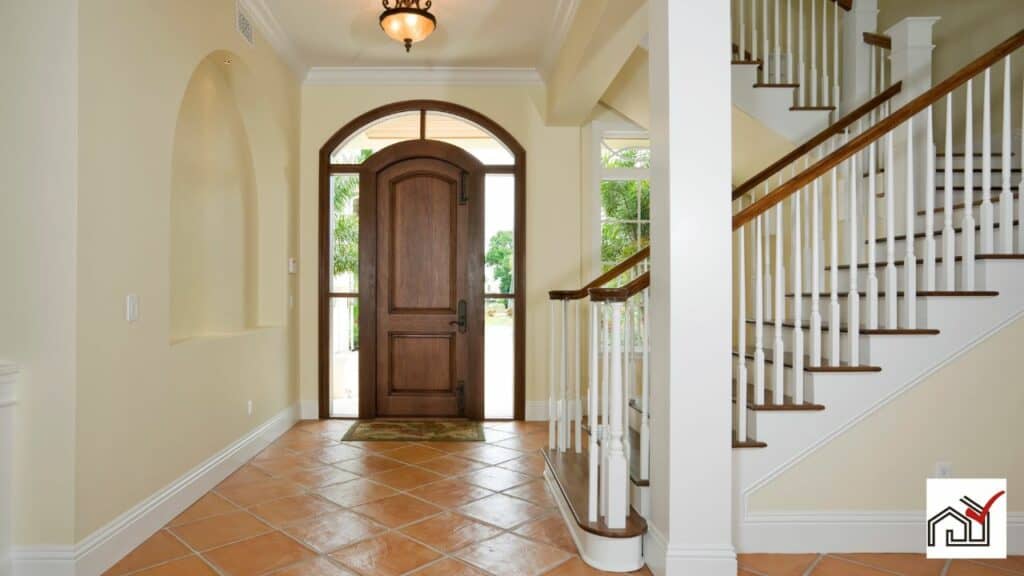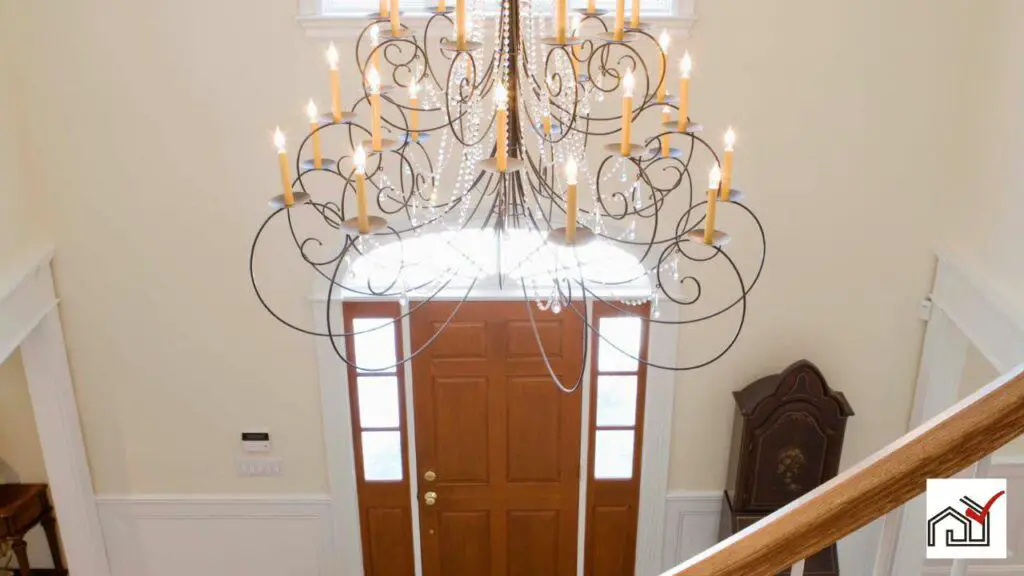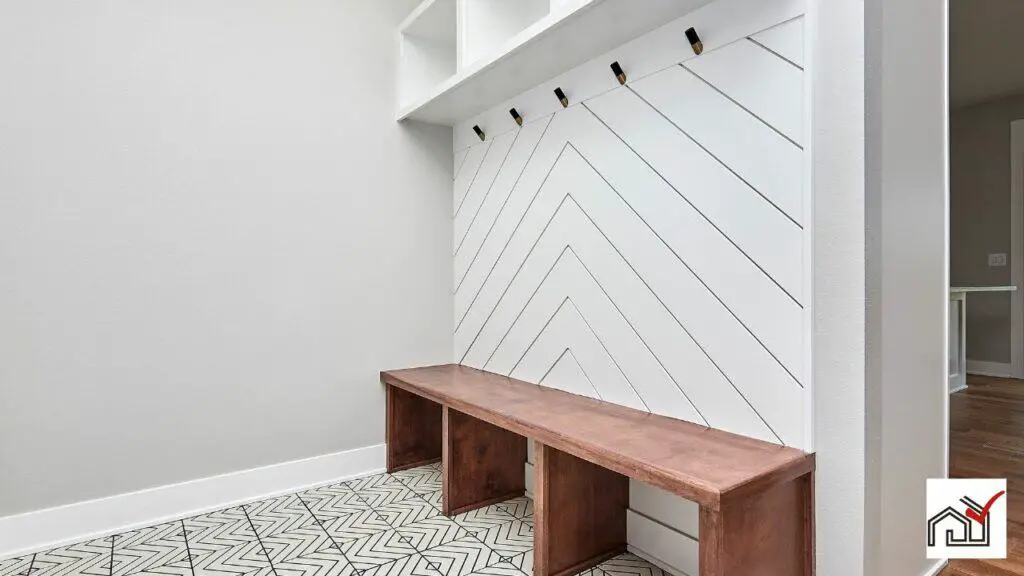Standard entryway table dimensions typically range from 36 to 48 inches in width, 10 to 18 inches in depth, and 30 to 33 inches in height. These dimensions can vary based on the size of the entryway and the intended function of the table.
The correct size should fit well in the space and meet the needs for storage, display, or decorative purposes. When choosing a table, it's important to consider the entryway's design and the user's needs to ensure the table is both practical and aesthetically pleasing.
Understanding Entryway Proportions
Selecting the right size console table for an entryway is important for both design and function. The table should be proportionate to the space. An ideal console table height is about 30 inches, aligning with most users' waist level. This height allows for easy access and suits many entryway designs.
For small entryways, the width and depth of the table are critical. A table too deep can hinder movement, while one too wide can make the area feel crowded or block doorways. Typically, a console table should be 12 to 15 inches deep and 24 to 48 inches long to balance surface space and foot traffic flow.
Placement of the console table should allow for clear movement and safety. Ensuring enough clearance around the table is essential to prevent collisions or obstructions.
Following these guidelines can help homeowners create a functional and aesthetically pleasing entryway.
Ideal Table Height Range
The ideal height for an entryway table is typically between 26 and 36 inches. This range accommodates various design preferences and practical needs. Console tables, commonly used in entryways, usually fall within this height range, providing an accessible surface that fits well with the surrounding space and furniture.
A table height of around 30 inches is frequently chosen as it often matches the back height of standard sofas, maintaining a consistent visual flow in the space. However, the appropriate height should be determined by the specific characteristics of the entryway, such as the size of the area and the height of other furniture pieces.
Table height is important; too tall and it may dominate the space or conflict with other items, too short and it may lack functionality or visual impact. The correct height balances utility and aesthetics.
Console tables need a height that allows them to be functional and to fit in with the other decorative elements. The right table height in an entryway ensures a welcoming and functional space. Although 30 inches is common, any height within the suggested range should aim to integrate practicality with visual appeal.
Optimal Table Width Guidelines
The optimal width for an entryway table should ensure it provides enough surface area without blocking foot traffic. Console tables are typically 24 to 48 inches long, which accommodates various entryway sizes. Consider the depth of the table, especially in narrow spaces. A depth of 10 to 12 inches is preferable for tight entryways to avoid a cramped feeling. For larger entryways, a wider table can be chosen to offer more space for items like keys and mail.
When placing a sofa table in an entryway, leave at least 6 inches of space from the couch for ease of movement and visual appeal. The table should be longer than the sofa but not to a degree that it disrupts the flow of traffic or overpowers the space.
The width of any entryway furniture should be chosen with the specific dimensions of the area and the overall layout in mind, prioritizing safety and comfort for people moving around the space.
Selecting Table Depth
Selecting the right depth for an entryway table is important for balancing the need for space with the table's functionality. The correct depth provides a surface for items like keys and mail and helps maintain an unobstructed walkway. Entryway tables should typically range from 10 to 18 inches in depth. This allows for adequate surface space for items and potential storage underneath without overwhelming the entry space.
When choosing a table depth, consider both its look and practicality. A deeper table may offer more display space, but should not block the entryway's flow. A table too shallow may not be functional. The scale of the entry area should guide the decision to ensure the table fits well in the space.
Shape and Style Considerations
When choosing an entryway table, it's important to consider both its shape and style to ensure it fits well in the space and matches the home's interior design. Console tables are typically long and narrow, ideal for tight spaces, whereas round tables suit larger foyers without impeding foot traffic.
Placement should consider room flow and balance. A round table is effective in the center of a spacious foyer, while a console is better suited against a wall or behind a sofa.
Entry tables can also be multifunctional; some may include storage options like drawers or shelves, or have a simple design for displaying items. The table's style should coordinate with the home's overall decor—a modern table for contemporary spaces, or a traditional piece for classic interiors.
Design expert Helling notes that the entryway introduces the home's style, highlighting the importance of selecting a table that not only looks good but is also functional.
Material and Durability Factors
When choosing an entryway table, consider both its material and durability to ensure it can handle daily use and last over time. The material chosen should suit both the style and functional needs of the space.
Solid hardwoods like oak, maple, or walnut are known for their strength and can hold heavy items without issue. These woods are suitable for supporting a mix of decorative and practical items.
Metal tables offer a modern look and are generally strong, with better resistance to scratches and dents compared to softer woods.
The stability of a taller table is dependent on the strength of its base, which is important in areas with high traffic where the table may be knocked. The material also influences how well the table stands up to wear and tear; in homes with children or pets, a more durable material may be preferable.
Accessorizing Your Entryway Table
Enhancing your entryway table with accessories can improve its look and usefulness. Opt for items that are welcoming and practical. A tray can keep keys and mail tidy, while a decorative bowl can hold small items.
Mirrors are a good choice for making the space seem bigger and brighter. Hanging a mirror above the table serves as decoration and is useful for a last-minute check before going out. Adding wall art or photos can make the space feel more personal and cohesive with the home's decor.
Proper lighting is important. A lamp should fit the size of the table and provide a cozy light, especially in the evening. For a table that is around 42 inches long, a medium-sized lamp would be appropriate.
Adding plants or flowers can make the space lively and colorful. If the table is against a wall, taller plants are suitable as they use vertical space and attract the eye.
Choose accessories that match your home's style and are durable for everyday use. The goal is to strike a balance between decoration and functionality, with pieces that suit the entryway table's size and design.




